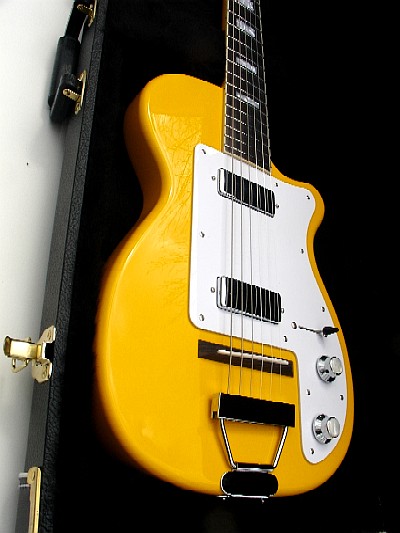
One De Armond Golden-Tone (S-grille soapbar) Some of the differences in the Stratotone models are summarised in the table below: Model The addition of vibrant body tones combined with improved pickups extends their range and versatility to permit perfect response and tone balance They were entry/intermediate level models and as such were not seen so often in the hands of the stars, however Brian Jones of the Rolling Stones was one proud owner of a H46 Mars, bought in 1962, and can be seen in early Stones footage using the instrument.Įxcitingly New! Ultra-Thin! Stratotone Electrics are now made with a carefully designed hollow "tone-chamber" wood body, in place of solid wood. The original H44 actually preceded the Fender Stratocaster, there was no name copying on Harmony's part! The truss rod does not turn at the moment but the neck is straight in service tuned-to-pitch so I'm not worried about it - overall deflection is under 1/64" at pitch.Harmony Stratotone Jupiter advertisement from 1962Īt a time of space exploration, space-age guitar names were all the rage - and with words like stratosphere ringing in a nations ears, it's no wonder that they were applied - along with the planetary suffixes. It does have minor usewear here and there and light nicks and dings but the look is good. Truss rod: adjustable (no more adjustment room)Ĭondition notes: it's pretty dang clean and all-original throughout. Pickups: 4x Guyatone adjustable-poles single coilsĪction height at 12th fret: 1/16" overall (fast)
#Airline guitar model 533 mod
Repairs included: fret level/dress, cleaning, reattach the ground wire, reseat a pickup, mod to tailpiece to make it "locked" (it's a whammy tailpiece, but they don't work well at all, so it's best to block them so they don't move), side dots install, setup.īridge: plastic adjustable (wound-G compensated) Post-repairs it plays smooth and quick and it's ready to go. That said, if you want to play plain-G, it'll need a different bridge that's compensated for it. The pickups don't sound "weird" when setup for wound-G. Most of these old Japanese guitars were intended for wound-G and they always sound best/more-balanced with it. The traditional voices are best, of course - neck or bridge on their own or the two together - but the two mid-pickups are also neat as well.īecause it's a '60s guitar, the bridge is compensated for a wound-G setup and so I've strung it like that, though in gauges 46w-10. In the real world, it seems to be best to just leave all the controls wide-open and then just cycle through the pickups on/off.

It seems like the idea was to adjust your desired tone between the pairs of pickups and then control their mix with the volume controls.

After that there's a couple of volume controls - one for each bank of two pickups.

Each bank has two on/off slider switches for the pair of pickups and a third slider switch which is a bypass-or-on switch for a tone control for the bank of two pickups. It's got four single-coil pickups arranged in two banks of controls. The neck is a full-C shape but has a 24 3/4" Gibson scale length which makes it feel a bit more "normal" compared to how so many import Japanese guitars from the time seem to be extra-short-scale. It has a very '60s voice - a bit clean and spanky but also a bit snarly. It's actually a Guyatone-made guitar, though, and a hip one at that. The back of the headstock reads "Model 533 Videocaster." How's that? The tailpiece cover reads "Kent."


 0 kommentar(er)
0 kommentar(er)
